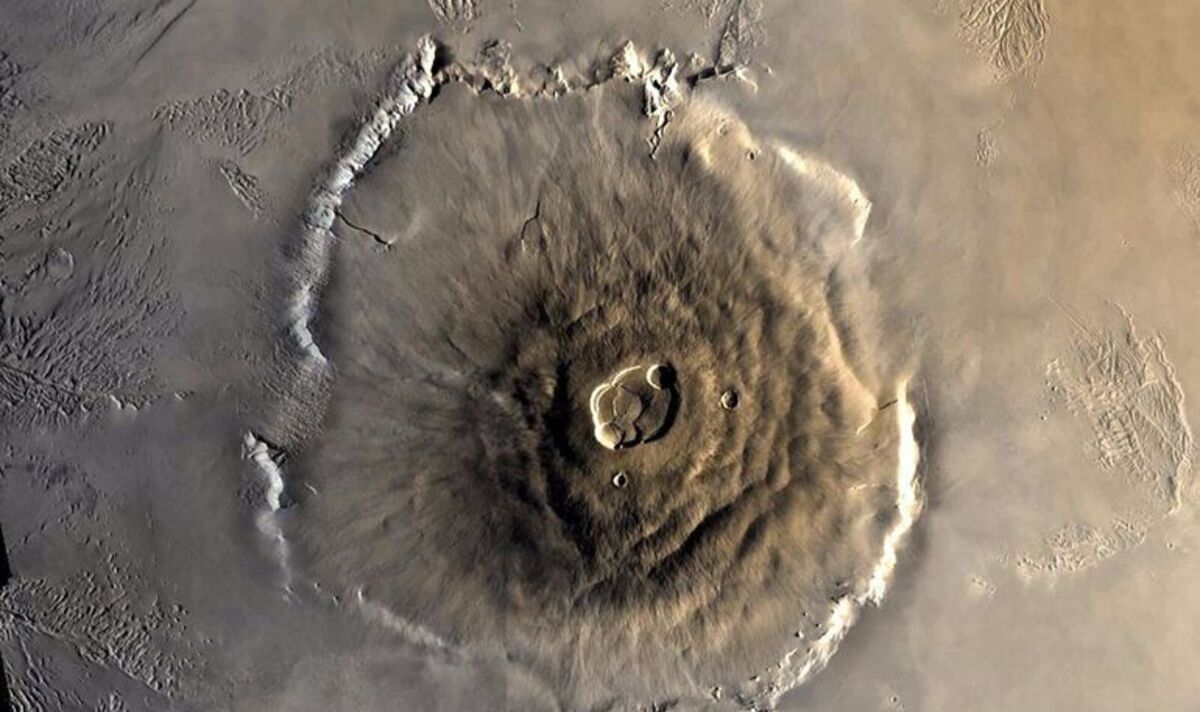Mars’ Largest Volcano – Olympus Mons
Mars’ Olympus Mons is the largest volcano in the entire Solar System, towering above anything in the surrounding plains.
Researchers believe it last erupted about 25 million years ago.
Found in the Tharsis Montes region near the Martian equator, the volcano is one of a dozen found on the Red Planet, many of which are ten to hundreds of times taller than those found on Earth.
Olympus Mons stands at around 16 miles high and stretches some 374 miles wide, making it an absolute monster of a mountain.
Yet, it wouldn’t be all that hard to climb if humans could withstand Mars’ deadly atmosphere, for Olympus Mons’s slopes incline gradually unlike many of the mountains on Earth.
READ MORE Scientist claims NASA found and accidentally killed life on Mars 50 years ago
In comparison, Hawaii’s Mauna Loa, the tallest volcano on Earth, is 6.3 miles above the sea floor, and the volume contained by Olympus Mons is about a hundred times that of Mauna Loa.
The entire Hawaiian island chain that it calls home could easily fit inside Olympus Mons.
While it is difficult to quantify terrain heights on Mars because it doesn’t have any surface water, scientists have defined an effective ‘sea level’ for Mars, known as the areoid.
This is an imaginary sphere which has the average equatorial radius of the planet.
Even though Olympus Mons is the biggest volcano in the Solar System, looking at it from Mars, you wouldn’t think it was that big.
Don’t miss…
‘NASA may have discovered life on Mars 50 yrs ago – but accidentally killed it'[REPORT]
Elon Musk’s ex Grimes wants to die in space when kids no longer need her[LATEST]
Scientists baffled as Mars is mysteriously spinning faster and faster[INSIGHT]
We use your sign-up to provide content in ways you’ve consented to and to improve our understanding of you. This may include adverts from us and 3rd parties based on our understanding. You can unsubscribe at any time. More info
Because its slopes are gentle, for anyone climbing it, Olympus Mons would simply look like an undulating hill.
Of course, given that it is as wide as France, it wouldn’t be possible to climb in a day, but it would be possible to walk to the peak at a leisurely level in a few months.
Once at the top, again, you wouldn’t feel as though you’ve climbed a mountain as the peak is so wide it’d be more like standing on a huge flat landscape, like steppe land.
Olympus Mons is a shield volcano, meaning its eruption sees slow-flowing lava run down its sides, hence the gentle slopes which rise on an average incline of just five percent.
Scientists believe the uppermost layer of the volcano is relatively young because when compared to the rest of Mars’ pockmarked terrain, it’s fairly smooth.
This raises the possibility that the volcano is still active, and could blow at any point.
From satellite images, a cliff or pointed edge can be seen surrounding the outer edge of the volcano which reaches as high as six miles, the cliff alone about as tall as Mauna Loa.
It has taken billions of years for Olympus Mons to form, with some regions of it only millions of years old — extremely young given the age of the Solar System.
Scientists aren’t entirely sure why such a massive volcano would form on Mars and not Earth, but they do think a lack of tectonic plates on Mars may have something to do with it, as might lower surface gravity, or that Mars has endured higher eruption rates making for more time for its volcanoes to grow.
Source: Read Full Article



